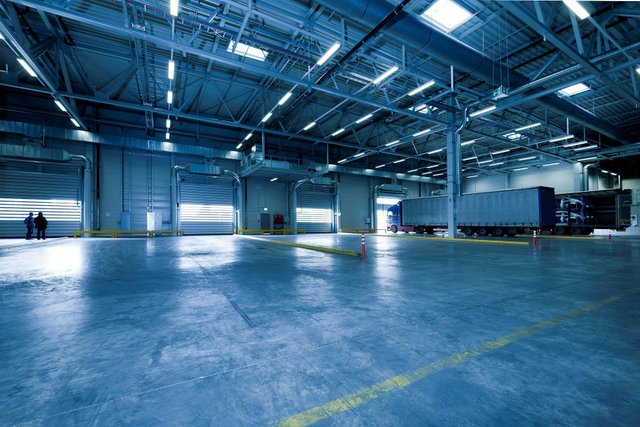
In recent years, many factories have shifted their operations from China to countries like Vietnam, India, and Mexico. This trend is driven by various factors, such as reducing costs, avoiding trade tensions, and diversifying supply chains. Despite these strategic relocations, many factories need more orders. Why is this happening? Let's explore some of the reasons behind this paradox.
Seeking Cost Efficiency
China has long been the world's manufacturing hub, producing various goods at competitive prices. However, rising labour costs and stricter environmental regulations have made manufacturing in China more expensive.
As companies seek to cut costs, Vietnam, India, and Mexico have emerged as attractive alternatives. Vietnam offers a growing industrial base and lower wages, while India boasts a large, youthful workforce and significant government incentives for manufacturing. Mexico benefits from its geographic proximity to the U.S., reducing shipping costs and lead times.
Trade Tensions and Tariffs
The trade war between the U.S. and China has led many companies to seek alternatives to Chinese manufacturing. High tariffs on Chinese goods make them more expensive in the U.S. market, prompting businesses to move production to countries unaffected by these tariffs. Vietnam, India, and Mexico present viable options for companies looking to avoid these additional costs.
Diversifying Supply Chains
The COVID-19 pandemic exposed the vulnerabilities of heavily centralized supply chains. Disruptions in one part of the world can impact global production and distribution. Companies are diversifying their supply chains by establishing manufacturing bases in multiple countries to mitigate these risks. This strategy aims to ensure stability and continuity in production, even if one location faces disruptions.
Initial Challenges in New Locations
Despite the potential benefits, factories relocating to Vietnam, India, and Mexico often need to overcome significant initial challenges. Setting up new operations is complex and involves navigating local regulations, establishing new supplier networks, and training a new workforce. These hurdles can delay production and affect the factory's ability to secure orders in the short term.
Quality Control Issues
Maintaining consistent quality is crucial for securing and retaining orders. New factories might need help with quality control as they adapt to new environments and workforces. Inconsistent quality can lead to delays in fulfilling orders and harm a company's reputation, making it harder to attract new business.
Infrastructure and Logistics
While countries like Vietnam, India, and Mexico offer lower labour costs, their infrastructure and logistics capabilities can be less developed than China's. Poor infrastructure can lead to inefficiencies in transportation and supply chain management, causing delays and increasing costs. These inefficiencies can deter potential customers from placing orders.
Competition and Market Dynamics
The global market is highly competitive, and factory relocation does not guarantee orders. Companies must continuously innovate and offer high-quality products at competitive prices. Additionally, they must navigate complex market dynamics, such as fluctuating demand, changing consumer preferences, and competitors' actions.
Building Relationships and Trust
Long-standing relationships and trust are essential in business. New factories in Vietnam, India, and Mexico need time to build relationships with local suppliers and customers. This process can take years, during which the factory might need help to secure consistent orders.
Economic and Political Stability
The economic and political stability of the new host countries is a critical factor in the success of relocated factories. Political unrest, changes in trade policies, or economic downturns can significantly affect production and demand. Companies must carefully assess the stability of their new locations and develop strategies to mitigate potential risks.
Adapting to Local Markets
Understanding and adapting to local markets is a key factor in achieving success. Companies that tailor their products and marketing strategies to meet the specific needs and preferences of local consumers are more likely to secure orders. Failing to do so can result in poor sales and difficulty in securing orders.
Strategies for Success
Companies relocating their factories can adopt several strategies to overcome these challenges and secure orders. One of the most crucial is investing in training and development for the local workforce. This is essential to ensure high-quality production and maintain standards and improve efficiency. Continuous development programs can help achieve these goals.
Building solid relationships with local suppliers is not just a strategy, it's a cornerstone of successful operations. Companies should invest time and resources in identifying and nurturing key supplier partnerships. These relationships can improve the reliability and efficiency of the supply Chain, ensuring a steady flow of orders.
Collaborating with local governments and investing in infrastructure improvements can alleviate logistical challenges. But technology is the key to unlocking efficiency and productivity. Adopting advanced manufacturing technologies and digital tools can enhance productivity and quality. Automation, IoT, and data analytics can streamline operations and reduce costs, giving companies the power to adapt and thrive in new locations.
Relocation of factories to Vietnam, India, and Mexico presents many opportunities and challenges. While these countries offer cost advantages and strategic benefits, the initial hurdles can be significant.
By investing in quality, building strong local relationships, and leveraging technology, companies can overcome these challenges and secure a steady flow of orders. The journey may be complex, but the potential rewards, such as increased market share and reduced costs, make it a worthwhile endeavor.